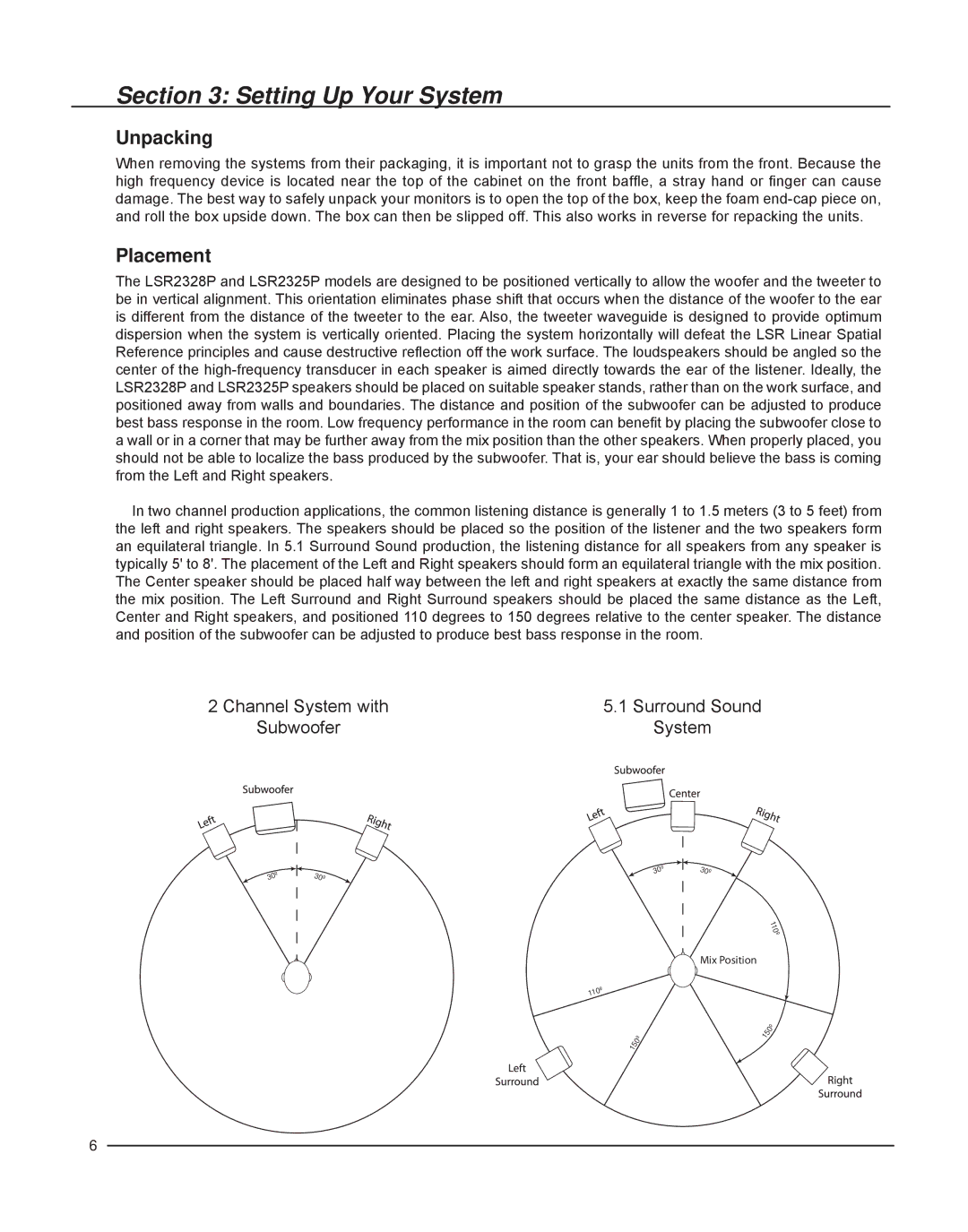LSR2328P specifications
The JBL LSR2328P is a professional studio monitor that exemplifies precision and clarity in sound reproduction. Designed for music producers, audio engineers, and enthusiasts, this monitor packs a punch in both performance and reliability.One of the standout features of the LSR2328P is its 8-inch, low-frequency driver that provides a deep, rich bass response. The driver is complemented by a 1-inch neodymium high-frequency driver that ensures crisp and accurate high frequencies, resulting in a well-balanced sound profile. This combination enables users to hear their mix accurately, whether during recording or mastering sessions.
The LSR2328P employs JBL’s patented Image Control Waveguide technology, which enhances stereo imaging and ensures a wide sweet spot. This means that even when you are not positioned directly in front of the monitors, you can still enjoy a consistent listening experience. The design also allows for excellent high-frequency dispersion, ensuring that sound is evenly distributed across the room.
To further enhance its versatility, the LSR2328P features a comprehensive set of controls on the back panel, including sensitivity adjustments and high- and low-frequency controls. This allows users to tailor the monitor’s response according to their mixing environment, making it adaptable for various studio spaces.
Another remarkable characteristic of the JBL LSR2328P is its self-powered capability, delivering a total of 150 watts of amplification. This built-in amplification eliminates the need for an external amplifier, saving space and reducing setup complexity. The monitor's lightweight design also makes it easy to transport, a key feature for mobile recording professionals.
In terms of connectivity, the LSR2328P is equipped with balanced XLR and TRS inputs, ensuring compatibility with a variety of audio sources. This flexibility makes it suitable for both home studios and professional settings.
The JBL LSR2328P stands out as an excellent choice for anyone seeking an accurate and reliable monitoring solution. With its combination of advanced technologies, robust build quality, and user-friendly features, this monitor is designed to meet the demands of modern audio production, ensuring that every detail of your sound is captured and reproduced with exceptional fidelity.

